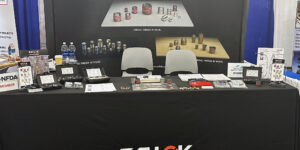Relevance of Drop-Weight Testing in the Determination of the Reference Nil-Ductility Temperature
The drop-weight test has become commonplace in the testing of ferritic steel and weld metal used in several types of components in nuclear reactor pressure vessels. But Regis Geisler of Lincoln Electric questions whether this method is now obsolete and whether there is another predictive tool that should be used to determine the RTNDT of weld deposits.
Posted: February 13, 2012
On the other hand, at TNDT + 60 deg F – where the CVN tests are conducted to verify the RTNDT – the variance in the data is far less around the “upper shelf” of the CVN curve. Driving this point home is the fact that F9P4-EM2-M2-H2 weld metal (obtained after PWHT of a LA-100 and MIL800-H deposit) consistently displays a CVN impact energy in excess of 80 ft-lb at minus 40 deg F. It may be presumed then that CVN data becomes a more accurate indication of the weld metal performance.
This consideration then begs the question: Is drop-weight testing actually relevant? Would it not be more prudent that the filler metal manufacturer be required to test at least one set of CVN specimen at or near the temperature at which achievement of 50/35 becomes more of a reality? Where required, a RTNDT could then be “backed out” by subtracting 60 deg F from this testing temperature.
One could argue that a considerable amount of reliable data and has been assembled showing an empirical relationship between the RTNDT (determined utilizing the present method) and the “Adjusted Reference Temperature” (ART) for irradiated steels developed in detail in U.S. Nuclear Regulatory Guide 1.99, Revision 2, so why diverge from the current process?
One reason is that the method offered in this regulatory guide is only valid for steels with yield strengths up to 50,000 psi and nickel content no greater than 1.20 percent. The nickel content for the LA-100/MIL800-H example given above is in excess of 1.60 percent, and so the methodology presented in Regulatory Guide 1.99, Revision 2 would not apply here.
Or alternatively, as has occasionally been required from us for weld metal to be used in the “beltline” region of the nuclear reactor, a complete ductile-to-brittle transition curve can be constructed. One of the requirements for the fashioning of this curve was that it had to be developed from a minimum number of sets of data – generally at least six sets. The same process would then be repeated for irradiated samples of the same classification of weld deposit created under the same welding and PWHT conditions.
In so doing, the “shift” of the NDTT to a higher temperature and the degree to which the upper CVN shelf is lowered can be more accurately determined.4 The results of such testing would provide nuclear constructors and operators important – and perhaps more accurate – information regarding the fracture toughness of the weld metal.
In my opinion, this would render the drop-weight test obsolete. But then again, there is the chance that I’ve been reading from an outdated playbook. If so, I invite the readers of this column to please provide a compelling argument for the drop-weight test, and to show that it is the only predictive tool that should be used to determine the RTNDT of weld deposits.
References
1. Oldfield, W. and Server, W.L., “NDTT, RTNDT, and Fracture Toughness: A Study of Their Interrelationships Using a Large Data Base and Computer Models.” Drop-Weight Test for Determination of Nil-Ductility Transition Temperature: User’s Experience with ASTM Method E208, ASTM STP 919, J.M. Holt and P.P. Puzak, Editors, American Society for Testing and Materials, Philadelphia, 1986, pp.129-141.
2. Odette, G.R. and Lucas, G.E., “Embrittlement of Nuclear Reactor Pressure Vessels.” Journal of Metals. Wexford, Pennsylvania, 53 (7) 2001. Pages 18-22.
3. Regulatory Guide 1.99, Revision 2: “Radiation Embrittlement to Reactor Pressure Vessel Materials.” Washington, D.C.: U.S. Government Printing Office, U.S. Nuclear Regulatory Commission, 1988.
4. Nanstad, R.K., Haggag, F.M., Iskander, S.K., “Radiation Induced Temperature Shift of the ASME KIc Curve.” Oak Ridge, Tennessee, Metals and Ceramics Division, Oak Ridge National Laboratory, 1989.










